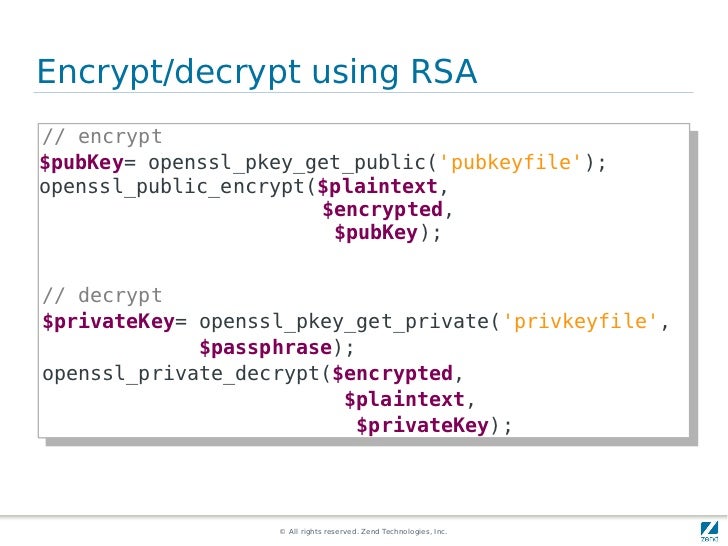Openssl Generate Strong Keys Using Eecdh
Cryptography/Generate a keypair using OpenSSL. From Wikibooks, open books for an open world. And primes used to create keys (prime1, also called p, and prime2. Mar 02, 2018 being the private key. With OpenSSL, the private key contains the: public key information as well, so a public key doesn't need to be: generated separately. Public keys come in several flavors, using different cryptographic: algorithms. The most popular ones associated with certificates are: RSA and DSA, and this HOWTO will show how to generate each of them.
An example of using OpenSSL operations to perform a Diffie-Hellmen secret key exchange (DHKE). The goal in DHKE is for two users to obtain a shared secret key, without any other users knowing that key. The exchange is performed over a public network, i.e. all messages sent between the two users can be intercepted and read by any other user. The protocol makes use of modular arithmetic and especially exponentials. The security of the protocol relies on the fact that solving a discrete logarithm (the inverse of an exponential) is practically impossible when large enough values are used.
In short, use the OpenSSL command line tool to generate: The EC Name Curve parameter file; The EC Key Pair (which uses the EC named curve parameter file as input) Extract the Public key from the Key Pair. This is the key you need to share with the other side. Derive the Shared Secret with the Peer's public key and the Key Pair you generated.
Wikipedia has a description and example of DHKE. My lecture slides on public key cryptography also include a description. My description of DHKE starts at about 39m 30s into the screencast available on YouTube. It includes a simple example starting at 47m 53s. View below to go straight to the DHKE portion of the lecture.
Serial key for Windows Server 2008 R2 can be found and viewed here. We have the largest serial numbers data base. KeyGenNinja.com (former KeygenGuru) KEYGENNINJA.COM IS THE BEST WAY TO FIND CRACKS, SERIAL NUMBERS, KEYGENs: Forum moderators are required!!! Windows Server 2008 R2. Windows Server 2008 R2 Compute Cluster (HPC) Product Key: TT8MH-CG224-D3D7Q-498W2-9QCTX. Windows Server 2008 R2 Datacenter. Product Key: 74YFP-3QFB3-KQT8W-PMXWJ-7M648. Windows Server 2008 R2 Enterprise. Product Key: 489J6-VHDMP-X63PK-3K798-CPX3Y. Windows Server 2008 R2 Itanium. Product Key: GT63C-RJFQ3-4GMB6-BRFB9-CB83V. Windows Server 2008 R2 MultiPoint. All of the examples provided are installation keys only; they will not activate your installed version of Windows. They are the default keys that are inserted if you choose to skip entering a Product Key during the installation process. 
OpenSSL provides both a library of security operations you can access from your own software, as well as a command line mode. In the past I've given examples of using OpenSSL to generate RSA keys as well as encrypt and sign with RSA. In the following I demonstrate using OpenSSL for DHKE.
DHKE is performed by two users, on two different computers. For my demo I do everything on one computer. The steps performed by each user are the same, but just with different files. In the following there is user 1 and user 2.
Steps for Diffie-Hellman Key Exchange with OpenSSL
Generate the Diffie-Hellman global public parameters, saving them in the file dhp.pem:
Ecdh Key Exchange
Display the generated global public parameters, first in the encoded form, then in the text form:

Openssl Ecdsa
Each user now uses the public parameters to generate their own private and public key, saving them in the file dhkey1.pem (for user 1) and dhkey2.pem (for user 2):
The other user uses the same public parameters, dhp.pem, to generate their private/public key:
The users must exchange their public keys. First extract the public key into the file dhpub1.pem (and similar user 2 creates dh2pub.pem - this step is not shown below):

After exchanging public keys, i.e. the files dhpub1.pem and dhpub2.pem, each user can derive the shared secret. User 1 performs the following to output the secret, a 128 Byte binary value into the file secret1.bin:
The other user does the same using their private key and user 1's public key to produce secret2.bin:
The secrets should be the same:
Openssl Generate Strong Keys Using Ecdh Key
PDF version of this page, 27 Jan 2013
Created on Sun, 27 Jan 2013, 1:24pm
Ecdh Online
Last changed on Mon, 03 Nov 2014, 10:46am